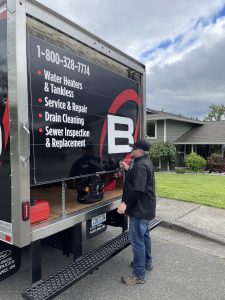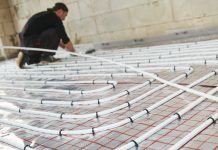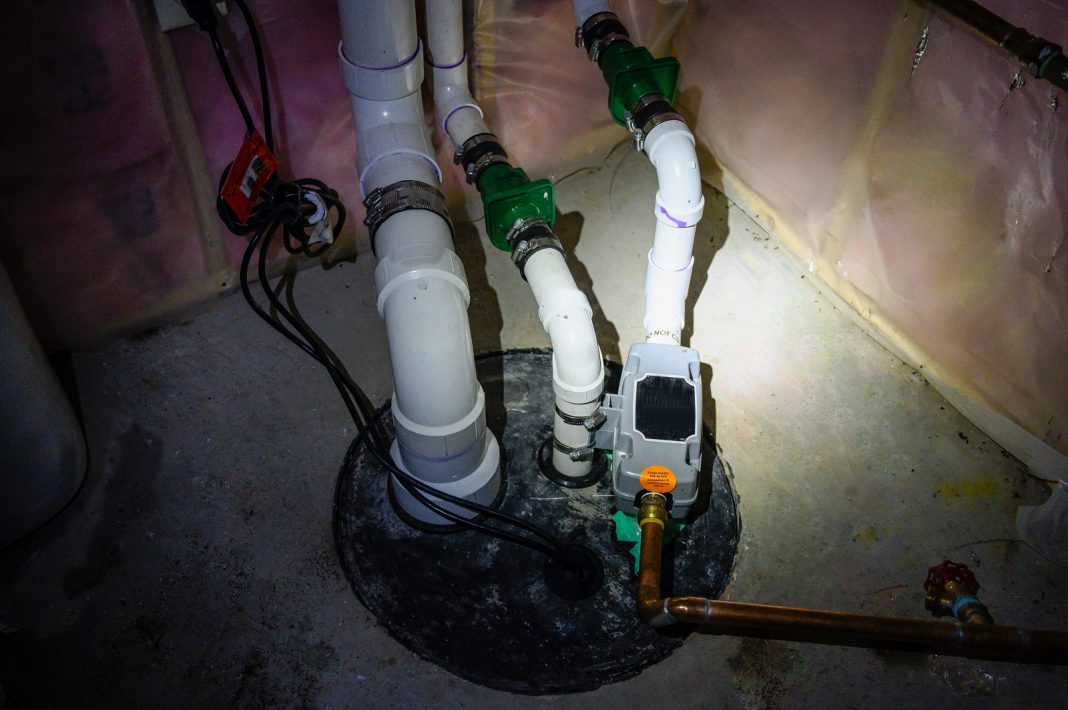Submitted by Barron Heating & Air Conditioning
Hello, fall! And hello rain, overflowing gutters, and standing water. When that excess water meets gravity, it pools quickly in the lowest points of your property and—as all too many of us in Northwest Washington know—can quickly become a big issue. Designed to move excess water out as fast as it comes in, sump pumps are the perfect match to prevent flooding and standing water in your home. Typically placed in the lowest point of your house, they effectively keep your basement or crawlspace dry and damage-free.

While systems that move water have been around for centuries, the sump pump as we know it first became common for household use in the mid-1900s. Today’s systems follow the same basic concept, with an impeller forcing water out of the “sump”—or a pit at the lowest point of your home—once that water reaches a certain level. Pumps may be pedestal style (above the sump) or submersible (inside the sump), based on your property’s unique needs.
Like all working systems, sump pumps require routine care and maintenance inspections to ensure they continue to perform at their best when you need them most. Stuck floats can be a common issue, preventing the pump from activating, or alternatively not allowing it to turn off. Lack of power can also be a big issue, says Jordan Forbes, plumbing operations manager at Barron Heating AC Electrical & Plumbing. “Nasty weather means power outages,” he says, “which can leave your home vulnerable if your sump pump runs on electricity.”
The experienced professionals at Barron Plumbing are well equipped to deal with a range of plumbing problems, as well as malfunctioning or improper equipment. “Swapping out an electric pump for a water-powered or battery unit,” Forbes continues, “is one way to protect your home if the power goes out often. Knee-deep water under your house after high winds and rain is a nightmare, so we’ll do everything we can to make sure that doesn’t happen.”
Whether your sump pump is imperative or preventative, it’s one of those systems that is highly important to be operating correctly before you really need it. Proper sump pump maintenance and a yearly inspection ensure just that—a safeguard that your home will be protected from flooding in case of storms, burst pipes, leaks, and more.
Forbes has seen firsthand the damage standing water can cause. “Last year we were called out to a bad smell after heavy rains,” he says. “Upon arrival, the customer informed us they had a french drain installed the year prior due to a wet crawlspace. We instantly asked for permission to investigate, and sure enough, we discovered nearly two feet of standing water throughout the entire space. It was a swimming pool!” The french drain was clearly not adequate and unable to divert enough water, resulting in mold, mildew, saturated heat ducts, and electrical circuits that shorted out—all of which could have been avoided with a proper sump pump. “They even had mushrooms growing on their foundation and posts!” says Forbes. The Barron Plumbing team set up large pumps to drain the crawlspace and installed a sump pump system with an alarm, ensuring this sort of disaster won’t happen again.
Stories like this are unfortunately not uncommon. A whopping 98% of U.S. basements will experience water damage of some kind and insurance companies pay a staggering $2.9 billion annually for water damage and mold claims. Excess water is a big deal, so when the rains come in, your home demands proper drainage—stat. Let our experienced Barron Plumbing team perform a top-to-bottom inspection of your sump pump. We’ll ensure your system continues to work properly when you need it most, offering you both peace of mind and protection for your pocketbook.




































